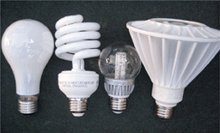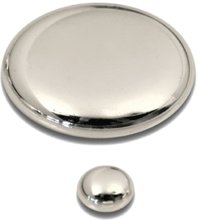Simanaitis Says
On cars, old, new and future; science & technology; vintage airplanes, computer flight simulation of them; Sherlockiana; our English language; travel; and other stuff
EFFICIENT BULBS, BUT….
I CONTINUE to encounter neat tidbits in Science magazine, published weekly by the American Association for the Advancement of Science.
The 25 January 2013 issue has two related pieces on high-efficiency light bulbs and their environmental implications. These prompted my interest to dig a little deeper.
Light bulbs of the compact fluorescent (CFL) or light-emitting diode (LED) types are very efficient—using between 70 and 85 percent less energy than traditional incandescent bulbs. They have longer life than the old-fashioned variety too, albeit at a higher initial cost. However, these light bulbs are, at best, environmental tradeoffs.
In its infinite scientific wisdom, back in 2007 the U.S. Congress legislated an eventual ban of incandescent bulbs, to be fully in place by 2014. Then they backed away, sort of. The 2014 deadline is still on the books, but enforcement has been “defunded.” This, apparently, is Washington-Speak for “We can’t agree to eliminate a bad law, but we can protect scofflaws from prosecution.”

The traditional incandescent bulb on the left may well be on its way out. This and element mercury image from Science, 25 January 2013.
Enforcement, or the lack thereof, may well be a moot point, as light bulb manufacturers have already been phasing out incandescent production.
But I stray from my scientific intent. What’s wrong with LEDs and, particularly, CFLs?
Consumers complain about these new bulbs swapping the warmth of incandescence for dim, yet harsh illumination. More seriously, researchers at Stony Brook University in New York have found that CFLs emit ultraviolet radiation, excesses of which can lead to skin damage and even cancer.
The CFL (but not the LED) emits UV through tiny flaws in its phosphor coating. Researchers admit the amount is also tiny, but they recommend not sitting too close to CFL illumination and, better yet, being shielded by an added layer of glass.
According to Science, and a more problematic downside, LEDs and CFLs contain certain metals in excess of generally accepted safe levels. This is of no concern when the bulbs are intact, but bad news when they’re broken or merely tossed in the trash after burning out.
For example, CFLs exceed California limits for lead, copper and zinc; LEDs, for lead and copper. Lead, in particular, has high toxicity. By federal and California standards, both types of bulbs are considered hazardous waste.
What’s worse, CFLs (and traditional fluorescent tubes as well) contain mercury, an element known to cause brain damage in fetuses and young children and other extreme maladies.
If a CFL bulb breaks, advice from the U.S. Environmental Protection Agency is emphatic: Immediately air out the room for 10-15 minutes. Turn off any heating or a/c. Don’t put the refuse in a plastic bag; use a glass jar to keep the mercury vapor from dispersing. Don’t vacuum the debris. And don’t touch the stuff.

The element mercury, chemical symbol Hg, is the only metal that’s liquid at standard temperature and pressure. It’s also toxic.
The EPA’s advice is certainly in marked contrast to our science classes back in the 1950s, where we were encouraged to chase little globs of this strange liquid metal around the lab table. And maybe it explains a lot about our generation.
Fortunately, after four years of negotiation, delegates from 140 countries have agreed on limits of mercury use. The Minamata Convention is named for a Japanese city where mercury poisoning from a local chemical plant killed thousands of people over the period of 1932 to 1968. Minamata disease was identified in 1956, particularly to the extent it affected people consuming fish and shellfish from Minamata Bay.
Signatories of the Minamata Convention mandate a phase-out of mercury in certain batteries, fluorescent bulbs, cosmetics and medical devices by 2020. Limits are also set on mercury traceable to coal-fired power plants, waste incineration, cement production and small-scale gold mining.
There’s only a scant amount of mercury in a typical CFL, perhaps 4 milligrams. Proponents say energy efficiencies of their adoption translate into lower emissions from coal-fired power plants.
On the other hand, power plants have expert monitoring and control of their emissions, whereas light bulbs are commonplace objects—with barely 2 percent of the new variety being recycled. ds
Dennis Simanaitis, SimanaitisSays.com, 2013


